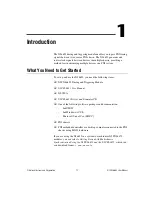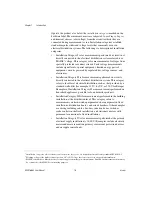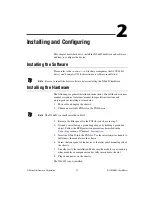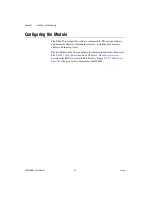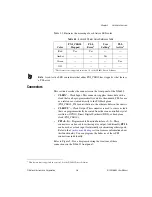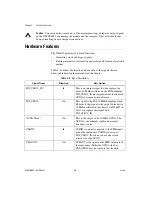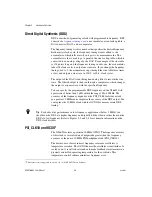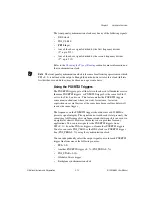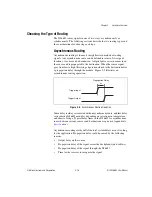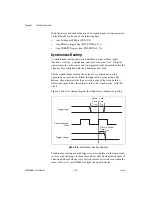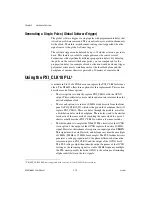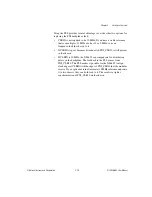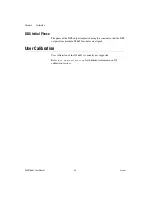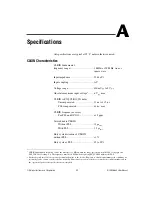
Chapter 3
Hardware Overview
3-8
ni.com
Direct Digital Synthesis (DDS)
DDS is a method of generating a clock with programmable frequency. DDS
consists of a
, an accumulator, a sine-lookup table, a
D/A converter (DAC), and a comparator.
The frequency tuning word is a number that specifies the desired frequency.
Each master clock cycle, the frequency tuning word is added to the
accumulator, which rolls over when it gets to its maximum value. The
accumulator value is used to get a point in the sine-lookup table, which is
converted to an analog voltage by the DAC. For example, if the sine table
is 128 points long, and the frequency tuning word is one, the accumulator
takes 128 clock cycles to output one sine wave. If you change the frequency
tuning word to 3, the accumulator steps through the sine table three times
as fast, and outputs a sine wave in 128/3, or 42.6, clock cycles.
The output of the DAC is run through an analog filter to smooth the sine
wave. The filtered output is then run through a comparator, which changes
the output to a square wave with the specified frequency.
You can specify the programmable DDS frequency on the NI 6653 with
a precision of better than 1
µ
Hz within the range 1 Hz–80 MHz. The
accuracy of the frequency depends on the PXI_CLK10 reference clock,
so a precise 10 MHz source improves the accuracy of the DDS output. You
can replace the 10 MHz clock with the OCXO for more accurate DDS
timing.
1
Tip
For better jitter performance in low-frequency applications (below 5 MHz), you
should run the DDS at a higher frequency and digitally divide it down rather than run the
DDS at a low frequency. Refer to Figures 3-3 and 3-4 for schematic information on the
DDS clock dividers.
PXI_CLK10 and OCXO
1
The NI 6653 features a precision 10 MHz OCXO. The frequency accuracy
of this clock is several orders of magnitude greater than the frequency
accuracy of the native 10 MHz PXI backplane clock (PXI_CLK10).
The main source of error in most frequency reference oscillators is
temperature variation. The OCXO houses the oscillator circuit inside of a
sealed oven. A resistive heater and automatic feedback circuit maintain a
precisely controlled operating temperature for the oscillator. This
temperature-control scheme minimizes frequency error.
1
This feature is not supported in version 1.0 of the NI 6653 Driver Software.


